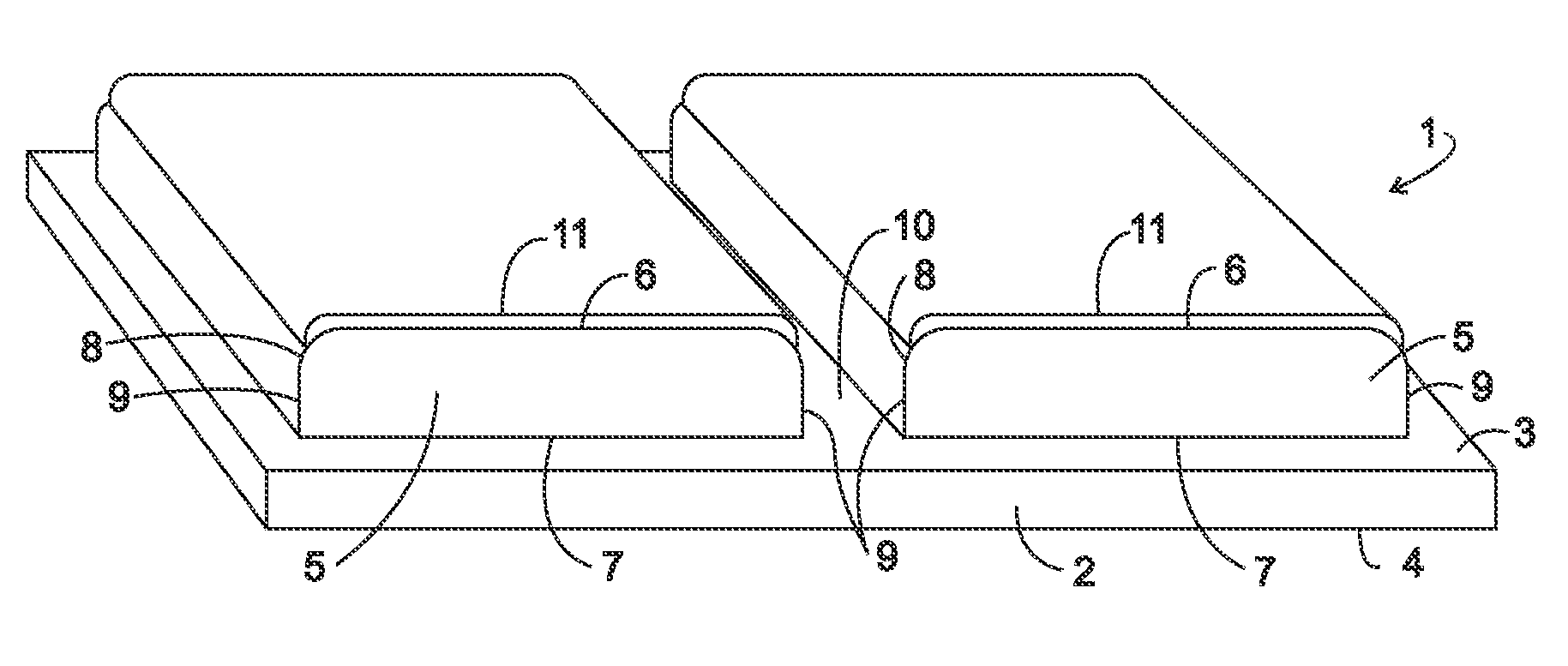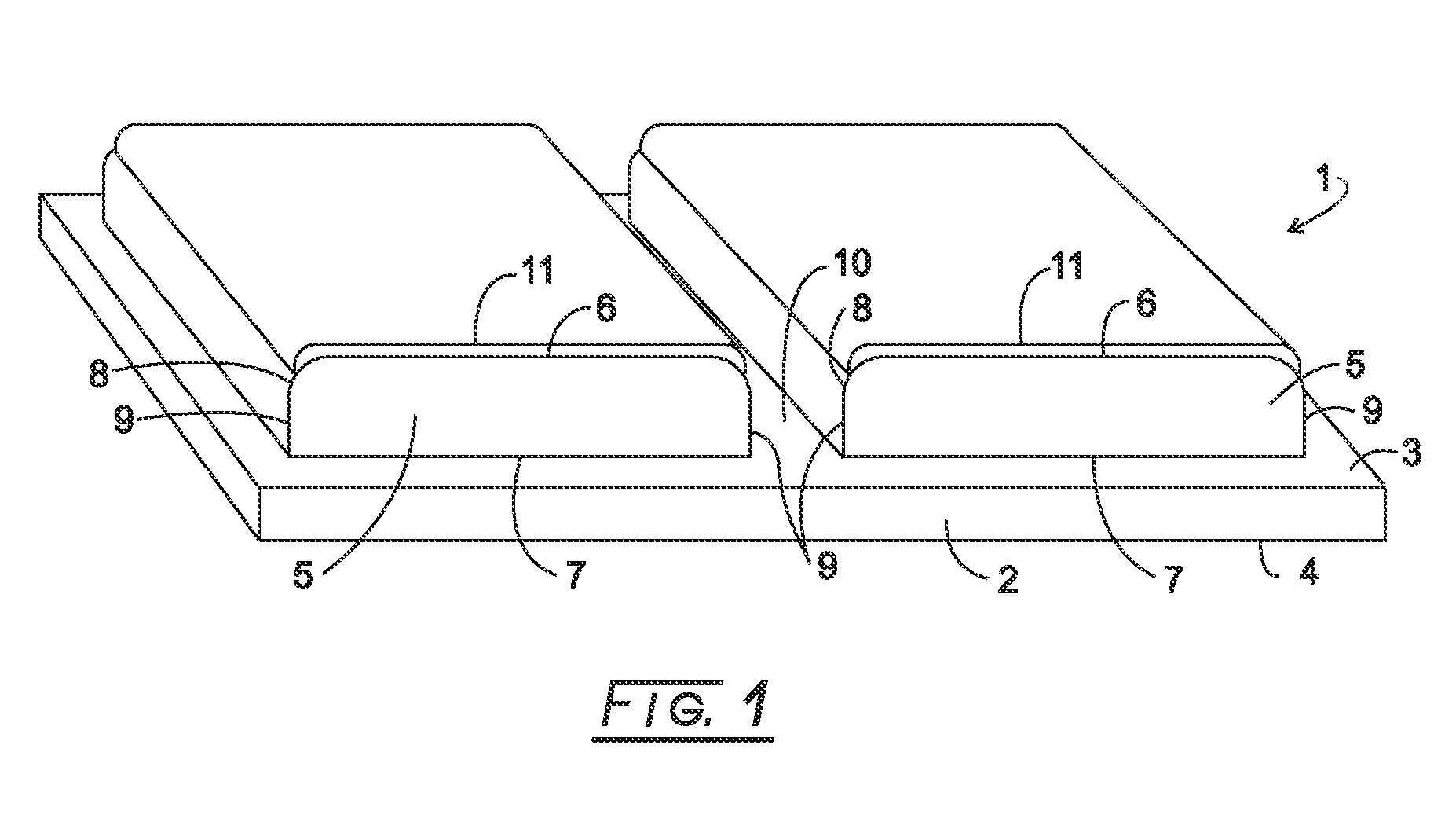Structural urethane adhesives comprising amide polyols
a technology of amide polyols and urethane, which is applied in the direction of adhesive types, transportation and packaging, and synthetic resin layered products, etc., can solve the problems of poor performance of water-based cementitious mortars and grouts in very wet applications, and the inability to easily use water-based cements on flooring and tiles, etc., to achieve enhanced adhesion, high strength and flexibility, and simple
- Summary
- Abstract
- Description
- Claims
- Application Information
AI Technical Summary
Benefits of technology
Problems solved by technology
Method used
Image
Examples
example 1
[0028]A dilactamide was made from DYTEK® A and lactide. A 50 ml., 3-necked, round bottomed flask was charged with 10.00 g (0.0860 mole) DYTEK® A amine (2-methyl-1,5-pentanediamine) and 23.64 g isopropyl alcohol. The flask contents were blanketed with dry nitrogen and stirred with a magnetic stirrer. Lactide (13.64 g, 0.0946 mole) was added, in portions, over two minutes, during which time an exothermic reaction occurred. The flask was immersed in an oil bath, which was then heated from ambient temperature to 85° C. over one hour and then held, with stirring, for three hours. The reaction mixture was transferred to a 100 ml. round bottomed flask and stripped of isopropyl alcohol on a rotary evaporator at 60° C. under water aspirator vacuum. The product was a red-orange, viscous oil. C-13 NMR spectral analysis showed that the 1-amino group was greater than about 90% reacted and the 5-amino group was greater than about 95% reacted.
example 2
[0029]A dilactamide was made from DYTEK® A and lactic acid. A 100 ml., round bottomed flask was charged with 18.64 g (0.1604 mole) DYTEK® A amine. While stirring with a magnetic stirrer, 34.00 g (0.3208 mole) of about 85% lactic acid was added over 13 minutes. The flask was immersed in a water bath for part of the time to help control the exotherm. The flask was equipped for distillation and immersed in an oil bath. With a slow stream of nitrogen flowing from reaction flask to receiver, the oil bath was heated from room temperature to 175° C. in three hours. The temperature was held at 175° C. for an additional hour. Residual water was removed from the reaction product on a rotary evaporator at 70° C. under water aspirator vacuum. A yellow-orange, viscous oil (43.98 g) was obtained. C-13 NMR analysis showed that 100% of both amino groups were reacted and about 17% of original lactic acid was still present.
example 3
[0030]A dilactamide was made from DYTEK® A and lactic acid. A 100 ml., round bottomed flask was charged with 116.21 g (1 mole) DYTEK® A amine. While stirring with a magnetic stirrer, 200.21 g (2 moles) of about 85% lactic acid along with 0.25 g (0.2 mole) of boric acid was added slowly. The flask was immersed in a water bath for part of the time to help control the exotherm. The flask was equipped for distillation and immersed in an oil bath. With a slow stream of nitrogen flowing from reaction flask to receiver, the oil bath was heated from room temperature to 175° C. in three hours. The temperature was held at 175° C. for 2 more hours. Residual water was removed from the reaction product on a rotary evaporator at 70° C. under water aspirator vacuum. A yellow-orange, viscous oil was obtained. C-13 NMR analysis showed that 100% of both amino groups were reacted and about 10% of original lactic acid was still present.
PUM
| Property | Measurement | Unit |
|---|---|---|
| temperature | aaaaa | aaaaa |
| temperature | aaaaa | aaaaa |
| thickness | aaaaa | aaaaa |
Abstract
Description
Claims
Application Information
 Login to View More
Login to View More - R&D
- Intellectual Property
- Life Sciences
- Materials
- Tech Scout
- Unparalleled Data Quality
- Higher Quality Content
- 60% Fewer Hallucinations
Browse by: Latest US Patents, China's latest patents, Technical Efficacy Thesaurus, Application Domain, Technology Topic, Popular Technical Reports.
© 2025 PatSnap. All rights reserved.Legal|Privacy policy|Modern Slavery Act Transparency Statement|Sitemap|About US| Contact US: help@patsnap.com



